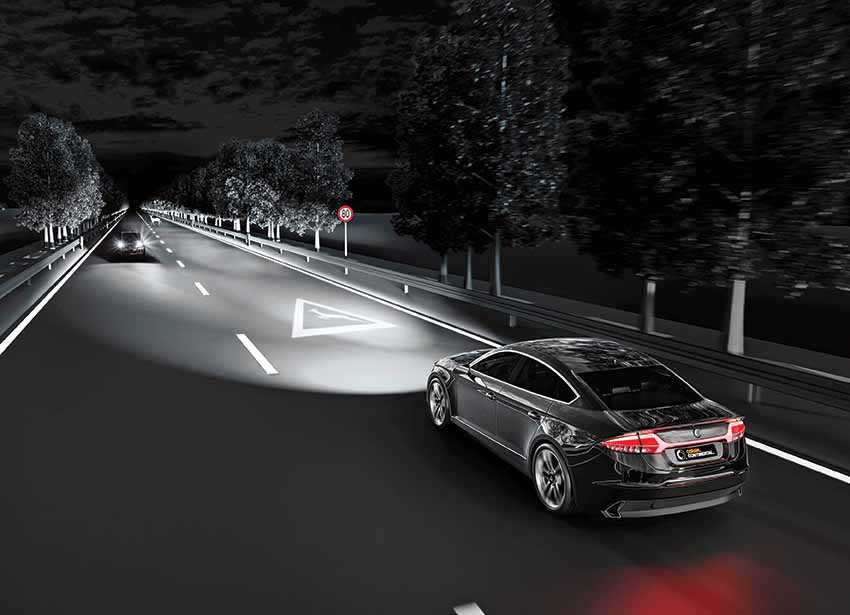Story by: Gunjan D. Bidani
OSRAM Continental GmbH, a 50:50 joint venture of the leading technology companies OSRAM and Continental, is working on a wide range of lighting products for the new generation of automotives. In the very first year, the joint venture acquired new businesses and is working on several projects around the world. The company has a state-of-the-art manufacturing plant in China. It will support its Asian business from Bengaluru.
Though the company has no immediate plan for a production site in India, it has a complete engineering centre covering all areas including system engineering, electrical design and layout, as well as a large software development team and a system testing team. “It is the largest research and development centre of OSRAM Continental outside Europe. We have 80 highly motivated engineers with state-of-the-art laboratory equipment,” Vidyasagar Sriperumbudur, Head of Osram Continental India, told Auto components India.
An important research and development area of the company is high definition headlights, which are able to adapt their beam in real-time to changing traffic or weather conditions.
“The high resolution ensures maximum luminous efficiency on the road, while the beam’s adaption contributes to minimum interference with other traffic participants and pedestrians. In addition, we are working on solutions for low power consumption as well as interior and rear lights. We are also developing solutions for symbol projection to enable communication via light for autonomous driving scenarios,” he said.
“As our mobility needs and expectations are changing, the car is increasingly evolving from purely a means of transportation to a sustainable, self-driving data centre on wheels. OSRAM Continental wants to actively shape this future and our teams are working on many connected solutions. For example, digital headlamp systems will play an even bigger role in future with autonomous driving on its way, focusing on the safety and security aspects of light. Complex adaptive projections with communicative functionality are a very important field for us. As these systems depend on real-time data processing, intelligent sensor fusion algorithms are also part of our daily business. Furthermore, we are exploiting the potentials of personalisation and perception by developing light projections in and around the car,” he said.
About the new joint venture company’s approach to shaping the future of mobility lighting, he said, “Our heritage and the support of our mother companies OSRAM and Continental are definitely unique. We profit from their many years of experience in the key technologies on both sides. OSRAM is the market leader in automotive lighting and Continental is an expert in electronics and software. Equipped with outstanding technological competence as well as the spirit and agility of a startup, we will take automotive lighting to a new level. We have the right people and the right products at the right time as the automotive industry takes decisive steps towards new driving scenarios.”
The OSRAM Continental engineers are pursuing some exciting ideas, especially in algorithm development for real-time and adaptive light beam distribution. In India, the company is running some projects which he refused to name. “However, our development team in Bangalore played a major role in developing intelligent lighting solutions for Daimler’s latest A-Class, which was launched in 2018,” Vidyasagar said.
The traditional evolutionary path was from halogen to xenon to LED-based headlight solutions. However, as manufacturers and governments are moving towards electrical vehicles, LEDs can help improve the vehicle’s energy efficiency. In India a direct move from halogen to LED-based headlights is happening. This switch over to LED lighting is catching up fast. For taillights in the two-wheeler range, LEDs have been used for several years.
A few best selling models have started using LEDs for headlamps. This trend is expected to continue and extend to more OEMs and their vehicle lines. Many other markets around the world have moved on from halogen-based lighting systems. OSRAM Continental has a wide range of products, from simple LED-based projector modules to intelligent lighting solutions that allow the light beam to be automatically adjusted to the traffic conditions in real time. As LEDs in the automotive industry will soon be standard, the ability to adapt to different traffic situations and to connect with other technologies within the car will be the differentiating factors.
“Apart from these fundamentals, lighting solutions are currently entering a new phase. They are merged with electronics and connected to the on-board systems of a vehicle, making them adaptive and intelligent. For future driving scenarios, light will become a differentiating technology that is no longer limited to the task of providing better visibility,” he said.
About cost optimisation with the help of technologies, Vidyasagar said, Cost optimisation is usually based on standardisation and parameterisation. The standardisation of electrical design and architecture at the vehicle level, as well as configurability, are the key to rapidly adopting new technologies such as LED-based headlamps in all product lines. ACI









Leave a Reply